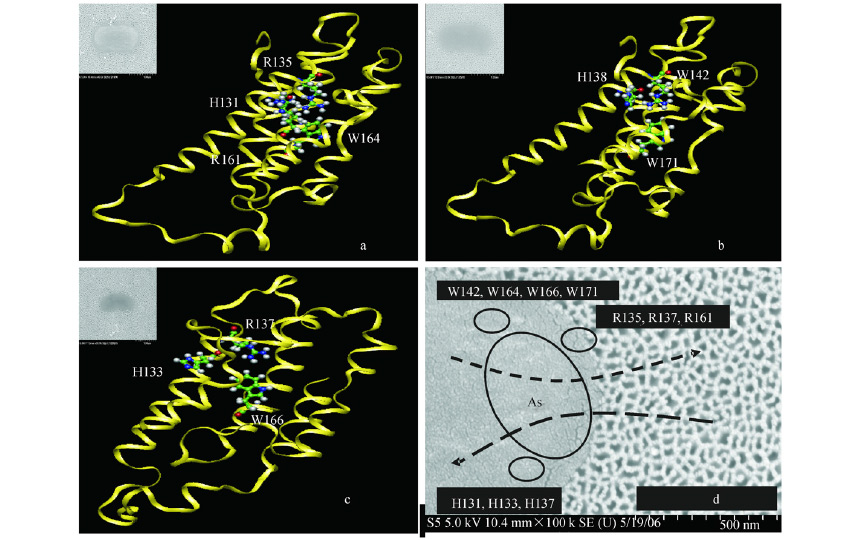

 다양한 환경 오염 현상을 지구 미생물 군집을 이용하여 학술적 연구개발
다양한 환경 오염 현상을 지구 미생물 군집을 이용하여 학술적 연구개발 E. coil 오염지표를 이용한 환경오염 지표 제시 연구개발
E. coil 오염지표를 이용한 환경오염 지표 제시 연구개발 지하수 인공함량시스템의 생물학적 막힘 (bioclogging)현상과 Molecular Biological Tools를 이용한 생태환경영향평가
지하수 인공함량시스템의 생물학적 막힘 (bioclogging)현상과 Molecular Biological Tools를 이용한 생태환경영향평가
모델 연구개발 폐광산의 광미, 침전토, 산성폐수에서 중금속(비소 등) 내성균 분리 및 종 변환에 관여하는 유전자 탐색: ars R,D,A,B,C,D,H,
폐광산의 광미, 침전토, 산성폐수에서 중금속(비소 등) 내성균 분리 및 종 변환에 관여하는 유전자 탐색: ars R,D,A,B,C,D,H,
그리고 aoxA,B,C,D, arrA,B 등 기능성 재조합으로 효율 확대 철 산화-환원 미생물: cym A,B,C,D,E,F,G,H,I,
그리고 J 등 기능성 재조합으로 효율 확대 또한, 중금속 이온을 환원시켜 금속이나 광물을 만듦 고사리의 뿌리에 서식하는 Rhiosphere/rhizoplane 의 공생관계를 밝혀 Environmental Bio Care 미생물의 최적화에 사용
고사리의 뿌리에 서식하는 Rhiosphere/rhizoplane 의 공생관계를 밝혀 Environmental Bio Care 미생물의 최적화에 사용

Fig.4 Modeling structure of the arsB efflux pump protein. Ribbon diagram of the avtive site of arsenic, shown in yellow, shown in white of arsenic binding enzyme, respectively. (a) OS-5; (b) OS-19; (v) RW-28; (d) arsB influx/efflux. In Fig.4d, schematic representation of arsenic binding to a marginally stable helival peptide containing four Trp, three His and three Arg. SEM images of arsenite-oxidizing bacterial OS-5 (AY952321), RW-28(DQ112333)and OS-19(AY866406) are shown. SEM image illustrate that the cell of strain P.putida are curved rods measured 0.2-1.0㎛ in length and 1.0-5.0㎛ in width.























